The 4 m International Liquid Mirror Telescope
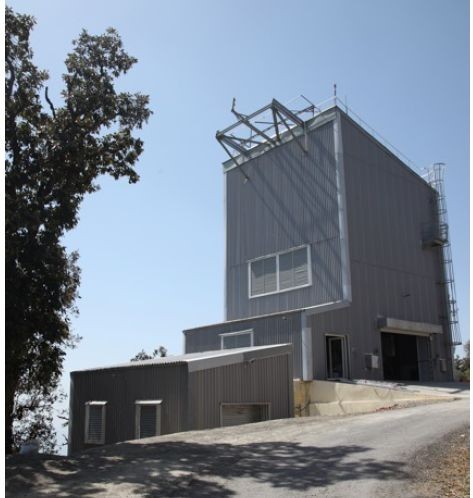
The ILMT, located in the Devasthal Observatory campus of ARIES, results from an international collaboration between institutes from multiple countries. The telescope is designed to perform deep photometric and astrometric variability surveys to detect transients. It achieved the first light on the 29th of April 2022 and, following a series of tests and corrections, was formally inaugurated on the 21st of March 2023. The telescope is now ready for science observations.
The technology behind liquid mirror (LM) telescopes is relatively simple. The primary mirror of the telescope is a rotating container with a highly reflective liquid (mercury) in it. The surface of the spinning liquid takes the shape of a paraboloid. Three components are required:
- A dish containing a reflecting liquid metal,
- An air bearing on which the LM sits, and
- A drive system.
An air compressor is needed to operate the air bearing. However, to avoid any interruption of the mirror rotation (cf. during the maintenance of the compressed air system), it is best to have two parallel air systems. Therefore, we have installed two Air compressors, both of which are of ‘High-quality rotary screw air compressor’ with full PLC controller and can deliver free air at pressure as high as 10-13 bar, needed to operate our air bearing systems.
The mercury mirror of the ILMT has a 4-meter diameter with an aperture of f/2 defined by the rotation speed. A 4Kx4K CCD camera manufactured by 'Spectral Instruments' and which can operate over the 4000 to 11000 Å spectral range (SDSS filters g', r', i' are available) is positioned at the prime focus of the ILMT at about 8m above the mirror. As liquid mirror telescopes cannot be tilted, they cannot track as conventional telescopes. Tracking is done artificially using Time Delay Integration (TDI) mode, in which the CCD electronically transfers its charge from one column to the next. The mirror, being parabolic in shape, requires an optical corrector to get a flat focal surface of about 22 arcminutes in diameter. All these elements are mechanically coupled by an external structure and a spider.
The ILMT monitors a strip of the sky of approximately 22 arcminutes centered at the declination of +29o21'40". It accesses about 40 square degrees of sky every night. The TDI technique provides an effective exposure time of 102s, allowing the ILMT to reach a limiting magnitude of 22mag in the i' band in a single scan. The exposures from multiple nights can be combined to probe even fainter objects. In contrast, image subtraction techniques are also applied to detect transient objects (supernovae, gamma-ray bursts, micro-lensing events, etc).
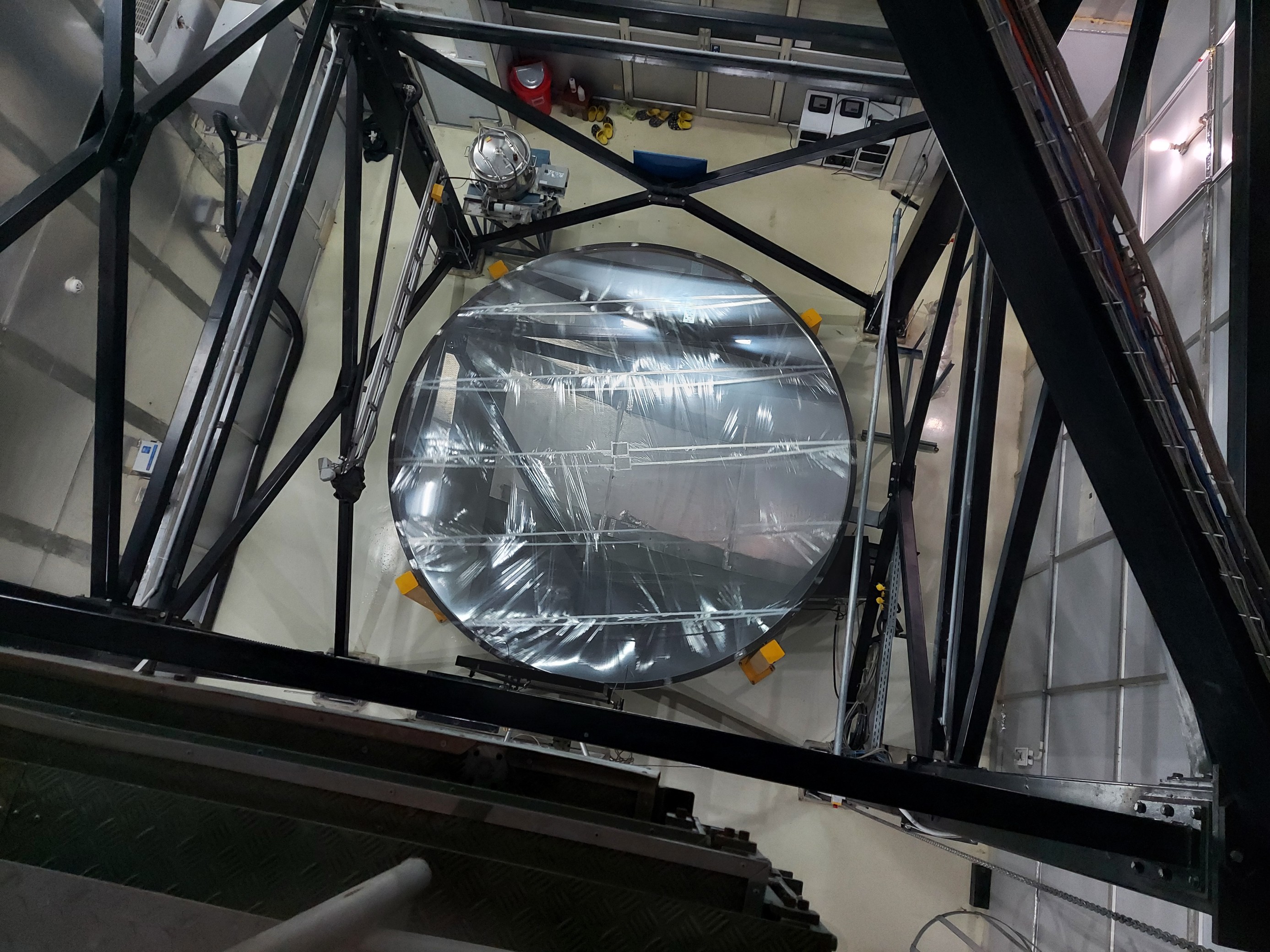
The ILMT achieved first light on the 29th of April 2022. Using the first light observations through the g, r and i Sloan filters, a colour composite image (shown below) of a small portion of the sky was prepared. The green colour has been slightly enhanced in the image to highlight the features of galaxies and other stellar objects. NGC 4274 Galaxy can be seen in the top right corner.
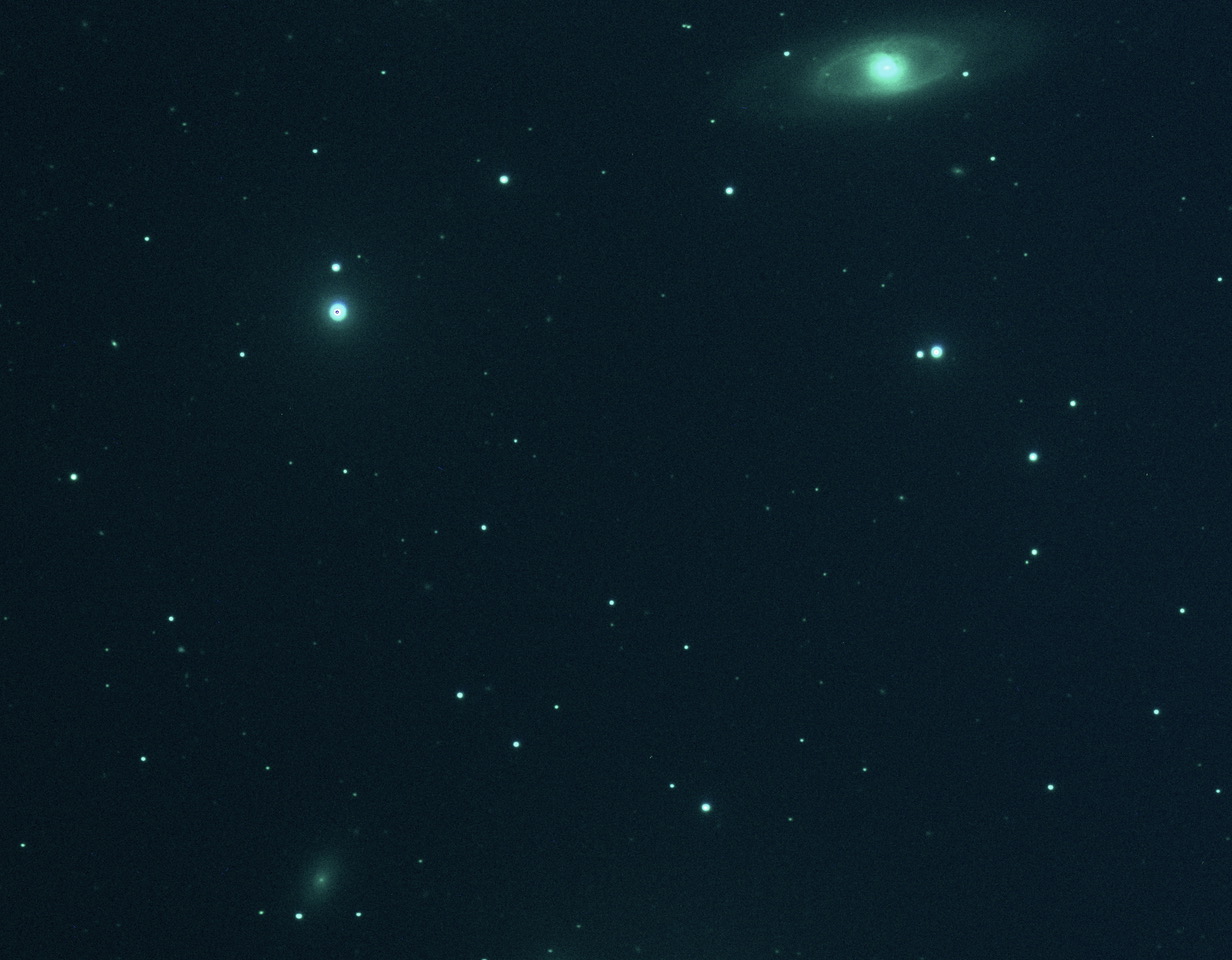
The ILMT was inaugurated on the 21st of March 2023 by the Honourable Minister of State for Science & Technology and Earth Sciences, Government of India, Dr. Jitendra Singh, in the gracious presence of the Honourable Governor of Uttarakhand, Lt. Gen (Retd.) Gurmeet Singh at Devasthal. Many Belgian and Indian dignitaries were also present on this momentous occasion. Glimpses from the inaugural function:
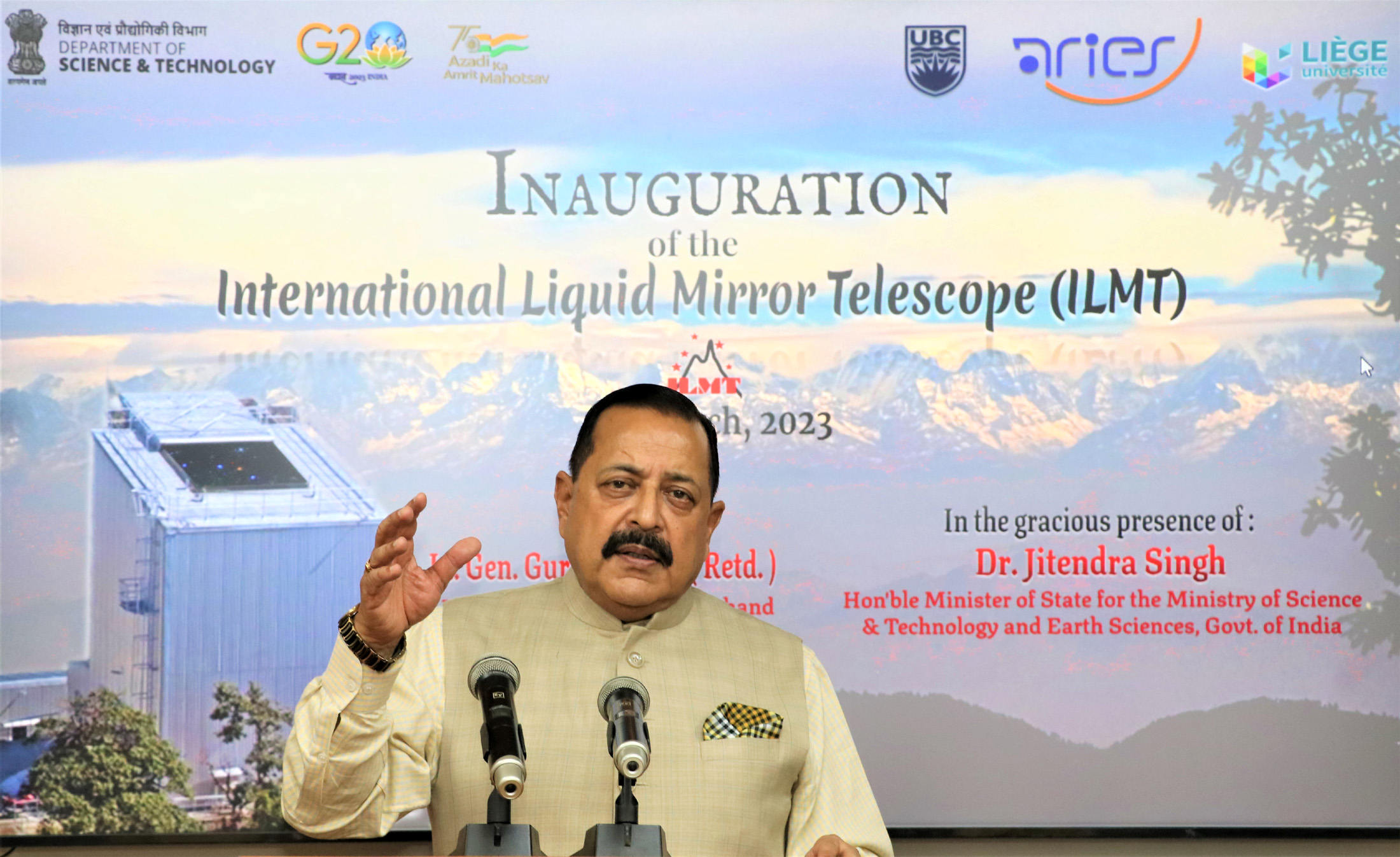

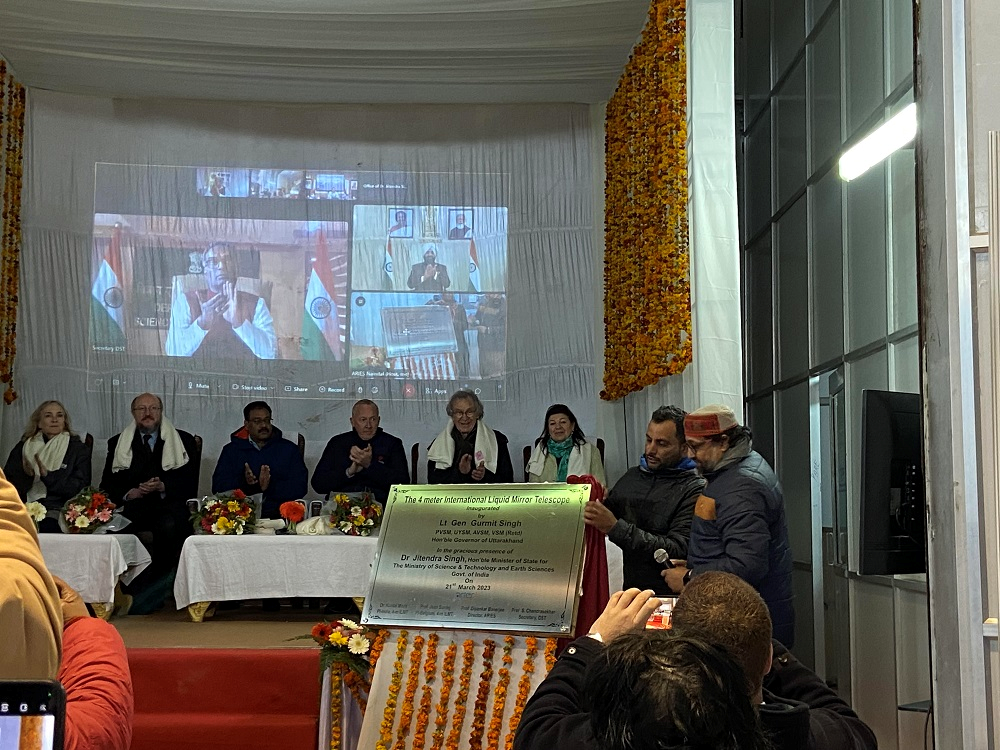
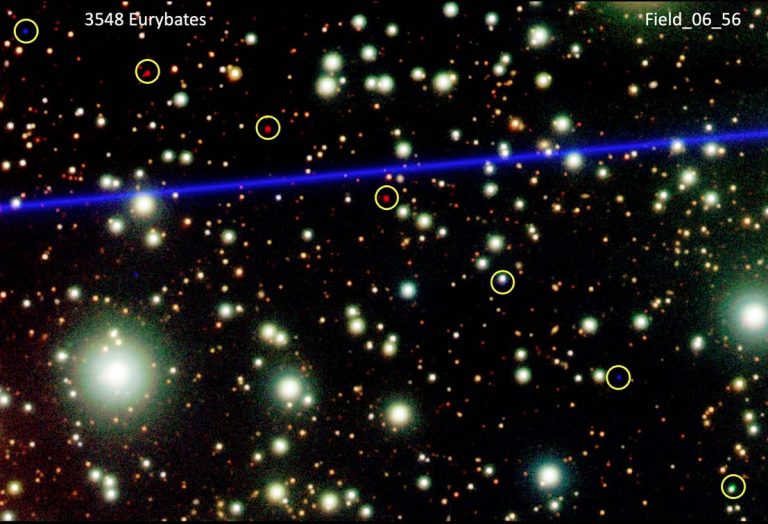
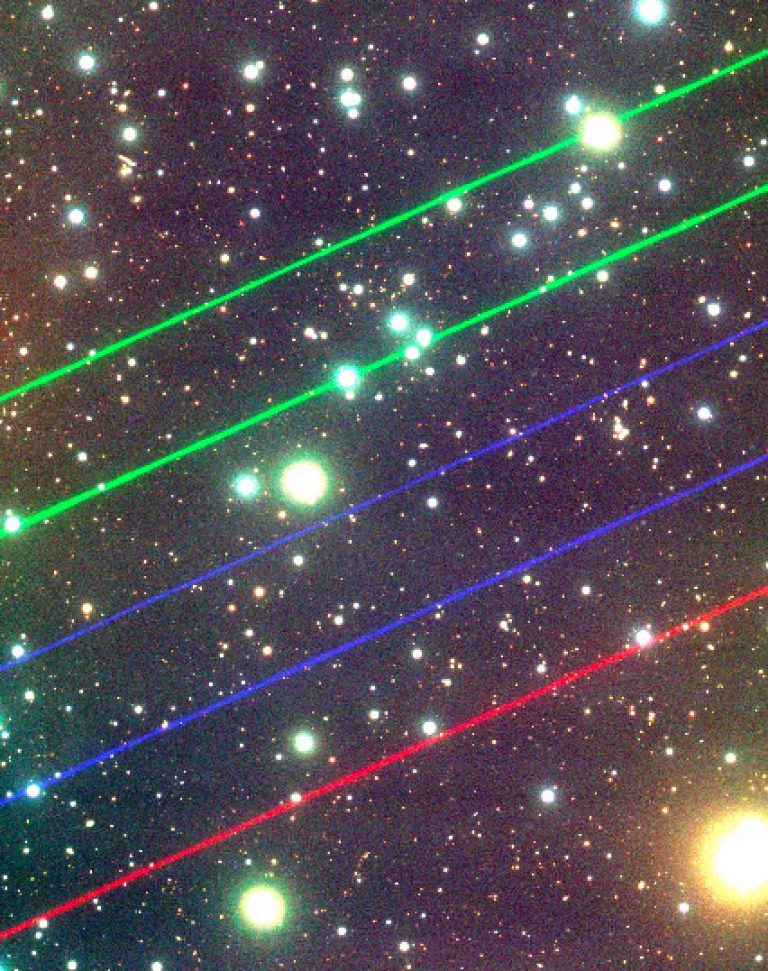
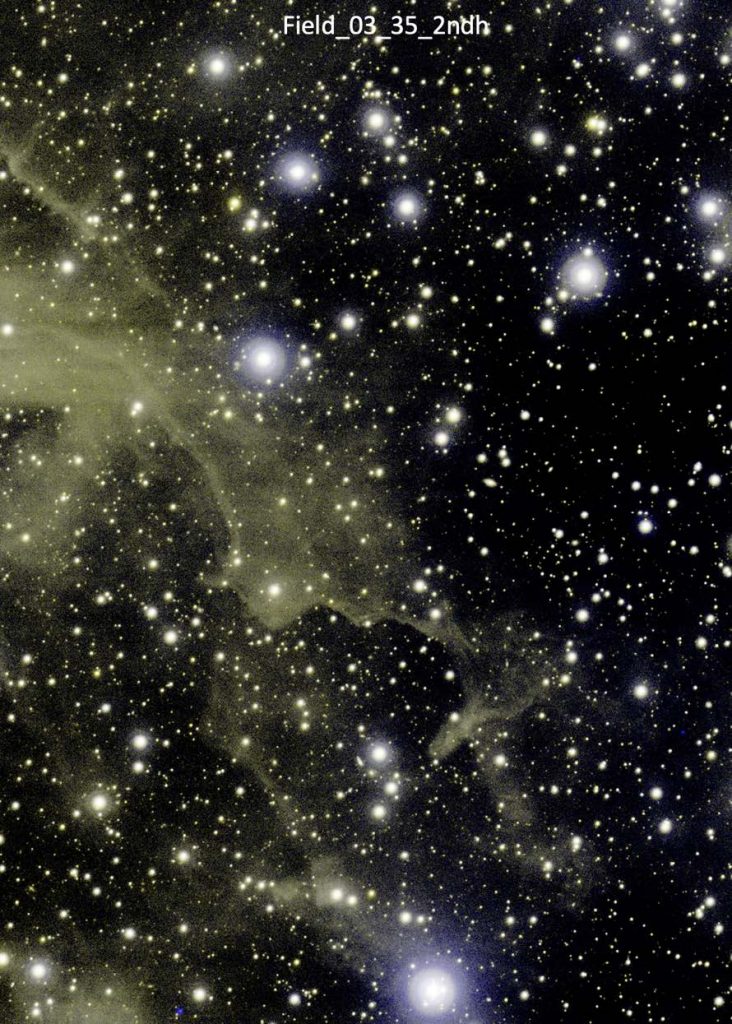
Given the zenith observing mode of a liquid mirror telescope and to access the northern galactic pole, the Devasthal observatory is ideally located in latitude (near +29° 22’ 26”). From this site, a deep (i' = 22 mag) survey will cover approximately 40 square degrees at high galactic latitude, which is very useful for gravitational lensing studies as well as for the identification of various classes of interesting extragalactic objects (cf. new quasars, supernovae, clusters, etc.).
Having achieved first light, the ILMT is used for continuous zenith monitoring within a narrow 22 arcminutes strip of sky at a latitude of ~+29° 22’ 26”. The survey is expected to last at least five years (or more) since the first light. The key features of the instrument/detector are as follows:
| Detector: | 4k x 4k CCD camera |
| Manufacturer: | Spectral Instruments |
| Operational wavelength: | 4000 to 11000 Å spectral range |
| Filters: | SDSS filters g', r' , i' |
| Integration mode | Time Delayed Integration (TDI) mode, i.e. it tracks the stars by electronically stepping the relevant charges at the same rate as the target drifts across the detector (integration time about 102 seconds). |
- The raw data and astrometric calibrated data (up to June 2023) can be downloaded using this link.
- Authors are requested to mention 4m ILMT in the title or abstract of the research publications.
- The following paper should be cited while describing the telescope.
Surdej J., Hickson P., Misra K., et al. 2025, Astronomy & Astrophysics, 694, A80
-
Acknowledgment: The 4m International Liquid Mirror Telescope (ILMT) project results from a collaboration between Aryabhatta Research Institute of observational sciencES (ARIES), India, the Institute of Astrophysics and Geophysics (University of Liège, Belgium), the Universities of British Columbia, Laval, Montreal, Toronto, Victoria and York University. It is a zenith sky survey telescope run and managed by ARIES, an autonomous Institute under the Department of Science and Technology, Government of India.
The ILMT team involved in the data obtained during the commissioning phase is composed of Bhavya Ailawadhi (1,2), Talat Akhunov (3,4), Ermanno Borra (5), Monalisa Dubey (1,6), Naveen Dukiya (1,6), Jiuyang Fu (7), Baldeep Grewal (7), Paul Hickson (7), Brajesh Kumar (1), Kuntal Misra (1), Vibhore Negi (1,2), Kumar Pranshu (1,8), Ethen Sun (7), Jean Surdej (9).
- Aryabhatta Research Institute of Observational sciencES, Nainital, India
- Deen Dayal Upadhyay Gorakhpur University, Gorakhpur, India
- National University of Uzbekistan, Tashkent, Uzbekistan
- Ulugh Beg Astronomical Institute, Tashkent, Uzbekistan
- Laval University, Quebec, Canada
- Mahatma Jyotiba Phule Rohilkhand University, Bareilly, India
- University of British Columbia, Vancouver, Canada
- University of Calcutta, Kolkata, India
- Liège University, Belgium
The ILMT team is thankful to Hitesh Kumar, Himanshu Rawat and Khushal Singh for their assistance in the operations of the telescope.
-
The next release of data will be in September 2025.
The 4m International Liquid Mirror Telescope (ILMT) project results from a collaboration between Aryabhatta Research Institute of Observational Sciences (ARIES, India), the Institute of Astrophysics and Geophysics (Liege University), the Canadian Astronomical Institutes, University of Montreal, University of Toronto, York University, University of British Columbia and Victoria University.
For more detail please visit: http://www.ilmt.ulg.ac.be/home/A digital brochure giving an overview of the ILMT is available here. A short film on the ILMT is given below.

